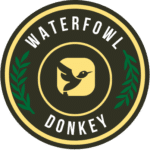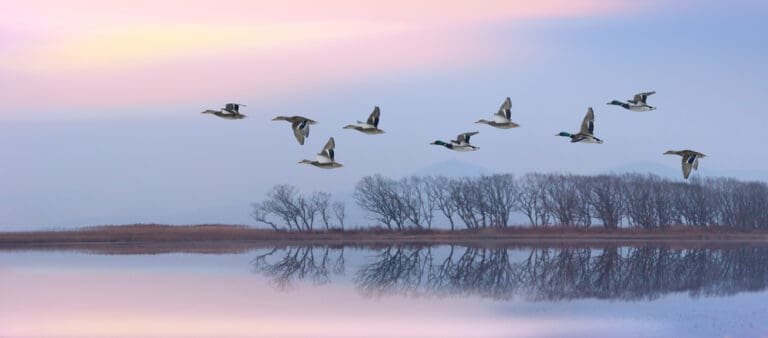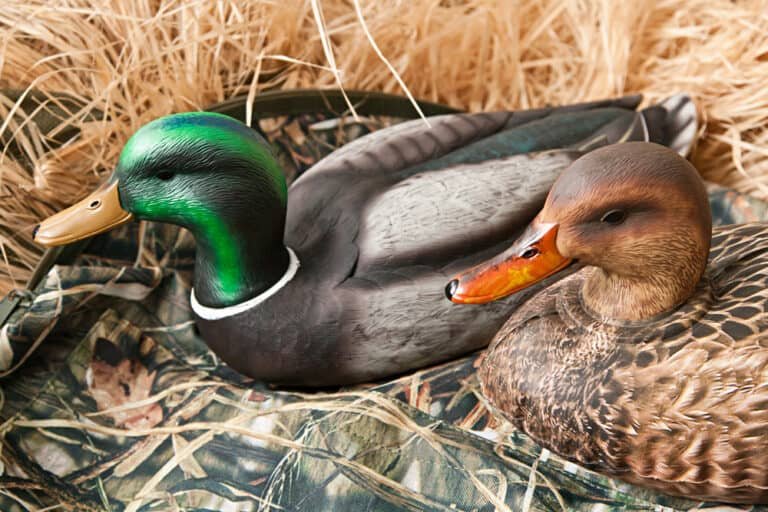Wetlands or Wheatfields: What Is the Best Hunting Ground?
Water vs. Field Hunting: Pros, Cons, and Techniques
In the vast realm of hunting, two popular methods have captured the hearts of outdoor enthusiasts for generations – water hunting and field hunting.
Each technique offers unique advantages and challenges that make them worth exploring. In this article, we will delve into the world of water hunting and field hunting, examining their definitions and popularity throughout history and ultimately discussing why hunters are drawn to one method over another.
Water Hunting
Abundance of waterfowl species for target selection
When it comes to water hunting, one of the key advantages is the sheer abundance of waterfowl species available for hunters to choose from. Whether you’re a fan of mallards, teal, geese, or any other majestic water-bound creatures, you’ll have a wide variety.
This unparalleled diversity not only adds excitement to your hunting experience but also allows you to broaden your skillset by targeting different birds with unique behaviors and characteristics. Moreover, these feathered beauties’ varying sizes and colors make every hunt a visual treat.
Natural concealment provided by surrounding water bodies
As any seasoned hunter will tell you, successful hunting largely depends on remaining undetected by your prey. Water hunting offers natural concealment through the surrounding bodies that act as excellent camouflage.
Ducks and geese feel safe and at ease in their watery environment, making them less cautious about potential threats lurking nearby. By positioning yourself strategically among reeds or bushes along the shoreline or using specially designed boat blinds that blend seamlessly with the surroundings, you can get closer to your targets without arousing suspicion.
Opportunity for unique hunting experiences (e.g., boat blinds)
Water hunting provides unique and exciting opportunities that are hard to replicate in other forms of hunting. One such experience is utilizing boat blinds—a popular choice among avid hunters who want to improve their skills.
Boat blinds allow hunters to remain hidden while floating on calm waters or navigating through marshes, giving them an advantage in mobility and concealment. The thrill of stealthily gliding across shimmering waters while waiting for the perfect moment to aim is an unmatched adventure that every passionate hunter should try.
Cons
Limited access due to private property or regulations
Though water hunting offers abundant opportunities, gaining access to certain areas can be challenging. Private property or strict regulations imposed by wildlife management authorities often limit the locations where hunters can pursue their targets.
This limitation can sometimes feel frustrating, especially for those who yearn to explore untapped territories rich in waterfowl populations. However, with proper research and adherence to hunting laws, it is still possible to find accessible and rewarding locations for your water hunting endeavors.
Challenging weather conditions affect visibility and comfort
Mother Nature influences water hunting and doesn’t always make it easy for hunters. Unpredictable weather conditions, such as heavy rain or strong winds, can create challenging situations that affect visibility and comfort. Rainfall may obstruct your view or make distinguishing targets from the surrounding environment difficult.
Strong winds impact your ability to navigate and cause disturbances in the water’s surface, potentially alerting wary birds of your presence. To overcome these challenges, experienced hunters equip themselves with proper gear like waterproof clothing and study local weather patterns before embarking on their hunts.
Higher equipment requirements (e.g., decoys, boats, waders)
Waterfowl hunting demands specialized equipment beyond what traditional field hunting typically requires. Apart from firearms and ammunition, water hunters need additional tools like decoys that mimic these birds’ appearance to effectively attract them within shooting range. Boat blinds or reliable boats are essential for mobility and concealment on open waters.
Sturdy waders are also a must-have, enabling you to traverse muddy marshes or shallow wetlands comfortably without compromising mobility or safety. While this additional gear may require a financial investment upfront, it is crucial for maximizing success during your waterfowl expeditions.
Techniques
Setting up decoy spreads for maximum effectiveness
Decoy spreads are an integral part of water hunting techniques. Properly arranging decoys in your hunting area can significantly increase your chances of attracting waterfowl and enticing them into landing within range.
Consider the species you’re targeting, their preferred feeding patterns, and the layout of your hunting spot when positioning the decoys. Creating a realistic scene that emulates natural behavior, such as birds feeding or resting, will enhance the effectiveness of your spread and make it more appealing to passing flocks.
Utilizing calls to attract waterfowl from a distance
Mastering the art of calling is vital in water hunting. By imitating different vocalizations specific to various species, you can grab the attention of distant waterfowl and guide them toward your setup.
Calls are powerful tools for communication between hunter and prey, whether a series of confident quacks or mimicking specific feeding sounds. Nevertheless, it’s important to balance calling just enough to pique their curiosity without overdoing it and making them suspicious.
Understanding wind patterns for optimal shot opportunities
Wind is essential to water hunting success by influencing bird behavior and shot opportunities. Waterfowl often prefer landing into the wind for better control during their descent; therefore, positioning yourself accordingly can increase your shooting chances significantly.
By observing wind patterns and setting up blinds or hiding spots accordingly, hunters can take advantage of birds approaching with cupped wings—a favorable moment for precise shots. Understanding how wind affects bird flight paths will help you anticipate their movements and strategize accordingly.
Field Hunting
Pros: Flexibility in choosing hunting locations without restrictions
In the vast world of field hunting, one of the major advantages is the freedom to choose your hunting locations without constraints. Unlike water hunting, which often has regulations or private property limitations, field hunting provides many open spaces to explore.
Whether it’s a cornfield in the heartland or a wheat field on the plains, you can scout and find the perfect spot that suits your preferences and maximizes your chances of success. The freedom to adapt and change locations allow for more variety in experiences and target selection.
Easier access to fields compared to water bodies
Another significant benefit of field hunting is its accessibility. While waterfowl can be found in various wetlands, ponds, lakes, and rivers, gaining access to these areas can sometimes prove challenging due to property ownership or restricted public access.
However, field hunting typically finds open fields near roadways or accessible public lands. This ease of access saves valuable time and effort that could otherwise be spent on traversing through rugged terrains or seeking permission from landowners.
Less equipment is required compared to water hunting
Regarding equipment requirements, field hunting offers a more straightforward approach compared to its counterpart on the water. In waterfowl pursuits over fields, you don’t need elaborate boats or waders; minimal gear suffices for a successful hunt.
Basic items like layout blinds for concealment purposes and realistic decoys strategically placed are often all that’s necessary. This simplicity reduces costs and makes field hunting more approachable for beginners who may not possess an extensive arsenal of specialized equipment.
Cons: Limited target selection with fewer species found in fields compared to water
Reliance on the natural cover or layout blinds for concealment
While field hunting offers advantages, one challenge lies in the limited target selection. Unlike water hunting, which presents a diverse range of waterfowl species, fields primarily attract ducks and geese.
This limitation means that avid hunters seeking a wider variety of avian targets may find their options more restricted when field hunting. However, this may not be perceived as a significant drawback for those who specifically appreciate the thrill of pursuing ducks and geese.
Visibility challenges due to lack of surrounding obstacles
Field hunting also presents visibility challenges that are less prominent in water-hunting scenarios. Concealing yourself from wary fowl becomes paramount in open fields without the natural cover provided by surrounding vegetation or water bodies.
Hunters must rely on natural cover like tall grasses or employ layout blinds strategically positioned to blend seamlessly with the surroundings. The absence of obstacles heightens the need for meticulous camouflage techniques and careful positioning to avoid detection by sharp-eyed birds.
Techniques
Setting up realistic decoy spreads mimicking feeding patterns
Setting up realistic decoy spreads is crucial to entice waterfowl into fields. Understanding their feeding patterns allows hunters to create an inviting setup that mirrors what ducks and geese would naturally encounter while foraging in the area. Positioning decoys strategically in small groups or larger formations can attract passing flocks, triggering their curiosity and drawing them closer within shooting range.
Utilizing various calling techniques based on field conditions
A skilled field hunter knows that effective calling techniques are essential for success. Different field conditions require different approaches – imitating feeding calls during calm mornings or utilizing comeback calls in windy afternoons to simulate birds trying to regroup after being startled. Adjusting your calls according to specific circumstances can be the key to fooling even the most cautious waterfowl.
Adapting camouflage strategies to the specific terrain
The final piece of the puzzle in field hunting lies in adapting camouflage strategies to match the specific terrain where you’re hunting. Considering elements such as the color and texture of surrounding vegetation and nearby landscape features allows hunters to blend seamlessly into their surroundings. Camouflage clothing, face masks, and hats become essential for remaining hidden from keen-eyed fowl while awaiting that perfect shot opportunity.
Field hunting offers several advantages, such as flexibility in location selection, easier access, and fewer equipment requirements. However, it has limitations, like limited target selection and increased visibility challenges.
To make the most of this type of hunting, hunters must utilize techniques such as setting up realistic decoy spreads, employing various calling techniques based on field conditions, and adapting camouflage strategies suited to the specific terrain they are hunting in. By mastering these skills and embracing the unique aspects of field hunting, hunters can find great satisfaction in pursuing waterfowl amidst open fields.
Conclusion
Embracing the Hunt: Finding the Perfect Balance
After exploring the pros, cons, and techniques of water hunting and field hunting, it becomes clear that both methods offer unique advantages and challenges. Water hunting provides a diverse range of waterfowl species to target, along with natural concealment and thrilling experiences on boats or blinds. On the other hand, field hunting offers flexibility in location selection, easier access to fields, and requires less equipment.
While water hunting may require specific gear like decoys and waders, field hunting demands adaptability with a natural cover or layout blinds. Ultimately, finding the perfect balance between water hunting and field hunting depends on personal preferences and specific circumstances.
Some hunters may prefer the tranquility of being surrounded by shimmering waters, while others enjoy the open expanse of fields under vast skies. Furthermore, considering geographical location, weather conditions, available resources, and target species can greatly influence one’s choice.
No matter which method you choose to pursue your passion for hunting waterfowl, remember that each outing is an opportunity to connect with nature profoundly. It’s about immersing yourself in the elements – feeling the gentle spray of water on your face or blending seamlessly into a golden wheat field at sunset.
So embrace this ancient pursuit with respect for nature’s beauty and marvel at how these majestic creatures navigate their world. Remember to practice ethical behavior by adhering to local regulations regarding bag limits and shooting hours while conserving our precious wetlands for future generations.
In closing, whether you wade through serene marshes or hunker down amidst rolling fields of grain until sunrise, paint the landscape in breathtaking hues – relish every moment spent as a hunter. In this seamless dance between hunter and prey lies an innate connection that taps into our primal instincts – reminding us that we are part of something much larger, wild, and timeless.






